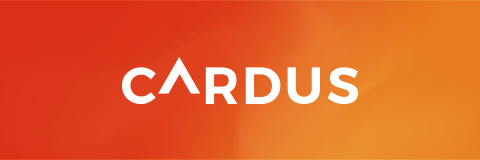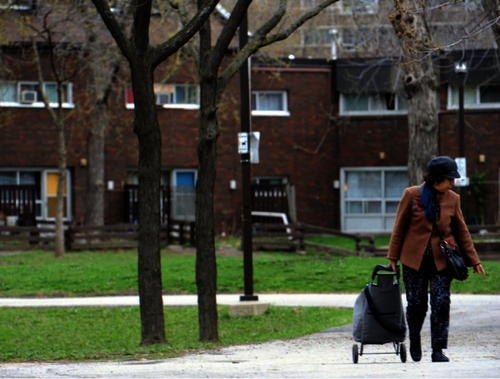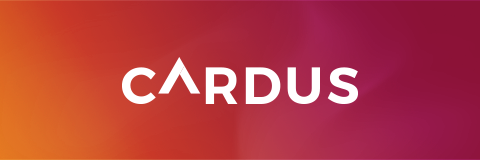Election campaigns are supposed to highlight differences. Stark differences provide alternatives that can inform voter choices. As the grind of this 11-week federal election campaign unfolds, the policy proposals and attempts by the parties to define themselves — and each other — creates the narrative that will inform voters’ final choices on Oct. 19. However, it is plausible that the most meaningful result of this campaign could be a significant change to how we conduct federal elections. Policies buried in the footnotes of the party’s platforms, and barely registering with the voting public, could fundamentally change the way Canadians choose their federal Parliament. Both Tom Mulcair’s NDP and Justin Trudeau’s Liberals are on record that this will be the last federal election using the “first-past-the-post” rules that have been in place since 1867. Many have responded to these proposals with a yawn. Opposition parties have frequently proposed electoral reform, only to fail to follow through once in office (which, by definition, they achieved under the old rules). Five provinces have seriously attempted electoral reform in the past decade. None of these processes resulted in meaningful change. So it’s easy to dismiss the current proposals. Liberal activist Adam Goldenberg argued in Policy Options recently that Mulcair cannot be trusted to follow through on his promise, citing pressure from the grassroots that caused Alberta NDP Leader Rachel Notley to drop a similar commitment before she became premier. Besides, he said, Mulcair has shown himself willing to put his party’s electoral prospects above his principals by refusing to support Green Party Leader Elizabeth May’s inclusion in all the debates. Of course, only a month or so ago NDP activist Jamey Heath opined that the Liberals are the obstacle to “our long overdue realignment” by expecting that the pressure for change will ultimately come outside of the electoral process. Yet suppose the first-past-the-post system under which the Oct. 19 election is being fought creates the conditions for different political motivations. Would Trudeau’s confident rejection of a coalition with Mulcair’s NDP withstand the pressure to remove Prime Minister Stephen Harper from office if the opportunity presented itself? Campaigns make a difference, so it is hardly prudent to predict outcomes this far in advance. However, it is credible to posit a scenario in which the Conservatives win 140-or-so seats, the NDP 120ish and the Liberals 70 or so. History suggests a third-place party that formally enables a minority government to sustain power is rarely rewarded. Witness what happened to junior members of Liberal-NDP Accord in the 1987 Ontario election, or the Conservative – Liberal-Democratic Coalition in the 2015 British election. The enabling party tends to get very little of the credit and at least an equal share of the blame from voters. Even the unification of the Progressive Conservatives and Canadian Alliance in 2003 was made possible only by a degree of sacrificial diplomacy from Peter McKay who, in agreeing to unite the parties, effectively killed his own prime ministerial ambitions. Sacrifice being notably in short supply in contemporary politics, is Trudeau ready to risk his personal ambition to see systematic change achieved? Well, the decision may not be Trudeau’s to make. The Liberal brand is a historic and powerful brand within Canadian politics. Even though it has been in decline on the federal stage, it will not disappear easily. Established Canadian political brands have longevity that outlasts electoral misfortune. In 1993, the federal Progressive Conservatives went from majority government to two seats in the House of Commons, yet their brand remained such that MacKay’s surrender of it in 2003 was hotly contested. The Liberal establishment, which shows little love for its NDP counterparts after decades of sparring for centre-left votes, will surely not be keen to watch Trudeau help Mulcair become prime minister. But what if the election results let both Liberal and NDP operatives realistically game scenarios in which they win the next election under new rules? Surely, then, removing Harper and the despised Conservatives becomes the necessary pretext to facilitate their strategies. Imagine a Liberal-NDP deal in which Mulcair becomes the prime minister provided he agrees to pass a new election law within two years, after which this election for change would be re-fought. There is plenty within both party platforms to be pointed to as a mandate for this change. If you are concerned Mr. Harper has turned the quick dash of a 37-day election campaign into an 11-week marathon of hope, prepare to have your patience tested further. Against the settled political outcome to which Canadians are accustomed, the 2015 vote could lead to deep uncertainty about how we’ll even choose our Parliament, followed by a snap 2017 election that will leave us more unsettled still. The only sure thing is that the consequences will be far reaching for Canada.

Increasing Our Ability to Evaluate Complexity
October 22, 2015

Would Trudeau’s rejection of a coalition withstand the pressure to remove Harper from office?
August 28, 2015

Ray Pennings on 570 News: Institutions need to maintain their identities
Cardus executive vice president Ray Pennings appeared on Kitchener, Ontario's The Eric Drozd Show with guest host Glenn Pelletier to discuss the recent news that an Atheist minister is fighting to continue working for the United Church. Pennings discussed how the institutional identity of the church includes certain fundamental beliefs, and how leadership in churches must commit to those beliefs in order to be effective leaders. If Rev. Gretta Vosper wanted to start a different organization to support a community sharing her beliefs, Pennings said, that would be well within her rights. But to ask the United Church conform to her beliefs is to challenge its very reason for existing. You can listen to this episode by clicking here and selecting Friday, August 7th, 2015 - 11am.
August 7, 2015

Making Public Housing Dollars Go Further
The Mayor’s Task Force on Toronto Community Housing (TCHC) wants more. It released an interim report last week complete with seven recommendations, almost every one of which calls for more: more funding for capital repairs, more security, better building conditions, more jobs and opportunities, more training for TCHC staff, more engagement between residents and TCHC staff. Given the size of the repair bill facing TCHC—$2.6 billion and climbing—wanting more is perfectly reasonable, even if the likelihood of getting enough to pay that bill seems small. So, what do you do when you need more, but don’t have enough? The tenants of TCHC know. You try to do more with less. Read the full article at the Toronto Star website.
July 28, 2015

Brian Dijkema in <i>Toronto Star</i>: Solutions for public housing
In light of the Mayor's Task Force on Toronto Community Housing's report released last week, Cardus Work and Economics' Brian Dijkema wrote about how the city might be able to stretch dollars to greater ends, as shown by research in the recently published brief, Tuning Up Ontario's Economic Engine. So, what do you do when you need more, but don’t have enough? The tenants of TCHC know. You try to do more with less. You work hard to stretch every little bit of money as far as it can possibly go. The Task Force, the TCHC, the Mayor’s office, and yes, the province, should learn from the TCHC’s tenants. In addition to asking for more, they should be searching the cupboards for ways to make the limited money they have go even further. Part of the solution may be hiding in plain sight, says Dijkema. Cardus research indicates that open competition could lead to savings of 20 to 30 percent. Read the full article at the Toronto Star website.
July 28, 2015

A Therapeutic Cartography
AN OLDER WITTGENSTEIN looked back on his younger self and realized something: "A picture held us captive. And we could not get outside it, for it lay in our language and language seemed to repeat it to us inexorably." There is a picture—a "worldview," you might say—carried in our language like a stowaway ideology. This tacit picture frames our experience and governs our observation. How we talk shapes how we see. We're suckers for simplistic, captivating pictures, mostly because we don't even realize that we're being sold a "frame"; we think we're just seeing "the way things are," when, in fact, we are buying into a paradigm. That's why, all too often, while trying to talk our way out of a problem we only dig deeper holes. The exercises and aphorisms that comprise Wittgenstein's Philosophical Investigations, be it said in passing, are a response to this realization. His project is a kind of image therapy, an attempt to help us see that a picture holds us captive and then offer an alternative frame. Read the rest of this article at the Los Angeles Review of Books website.
July 19, 2015

James K.A. Smith in LA Review of Books: Who benefits from the “conflict” between Science and Religion?
In his recent review of The Territories of Science and Religion by Peter Harrison, Comment Editor-in-Chief James K.A. Smith points out how the "cartography" of paradigms can hold us captive. Case in point: why have religion and science been perennially situated at odds with one another? ... who stands to benefit from this reconfiguration of religio as "religion" and scientia as "science"? And who benefits from the endurance of the conflict myth? This is where Harrison's nuanced attention to contingency is perhaps most illuminating. As he persuasively points out, in 17th-century England we see Christianity sowing the seeds of its own destruction.
July 19, 2015

In South Carolina: A public flag, a personal quest
Seventeen years is a long time to wait in politics. One would think that was the case for David Beasley, former Republican governor of South Carolina. But is it really that long? The answer came last Friday at 10 a.m., as police lowered and removed the Confederate flag from the grounds of the State House in Columbia. It was a memorial moment for the state, and the country, and especially so for Mr. Beasley who, in the aftermath of the Charleston church shootings, and with the help of many others, won the fight to have the controversial flag removed. The gesture and its necessity can be perplexing for Canadians. I’m not sure I would have understood it, if not for my good fortune to be on the Capitol building steps with Mr. Beasley as the flag came down. The vivid, emotional meaning of the event transcended geography or common history. The crowd was curiously quiet for a bit. Then the shout began and built in intensity: “Take it down. Take it down. Take it down!” The power of the chant was the force of time moving forward in a way that seemed to obliterate ever going backward. ... Read the full article at the Globe and Mail website.
July 15, 2015

Michael Van Pelt in Globe and Mail: Removal of Confederate flag transcends geography and history
Cardus President Michael Van Pelt was printed in today's Globe and Mail, reflecting on the removal of the confederate flag from the State House in Columbia, South Carolina. Seventeen years is a long time to wait in politics. One would think that was the case for David Beasley, former Republican governor of South Carolina. But is it really that long? The answer came last Friday at 10 a.m., as police lowered and removed the Confederate flag from the grounds of the State House in Columbia. It was a memorial moment for the state, and the country, and especially so for Mr. Beasley who, in the aftermath of the Charleston church shootings, and with the help of many others, won the fight to have the controversial flag removed. The gesture and its necessity can be perplexing for Canadians. I’m not sure I would have understood it, if not for my good fortune to be on the Capitol building steps with Mr. Beasley as the flag came down. The vivid, emotional meaning of the event transcended geography or common history. The crowd was curiously quiet for a bit. Then the shout began…To read the article, click here.
July 15, 2015
